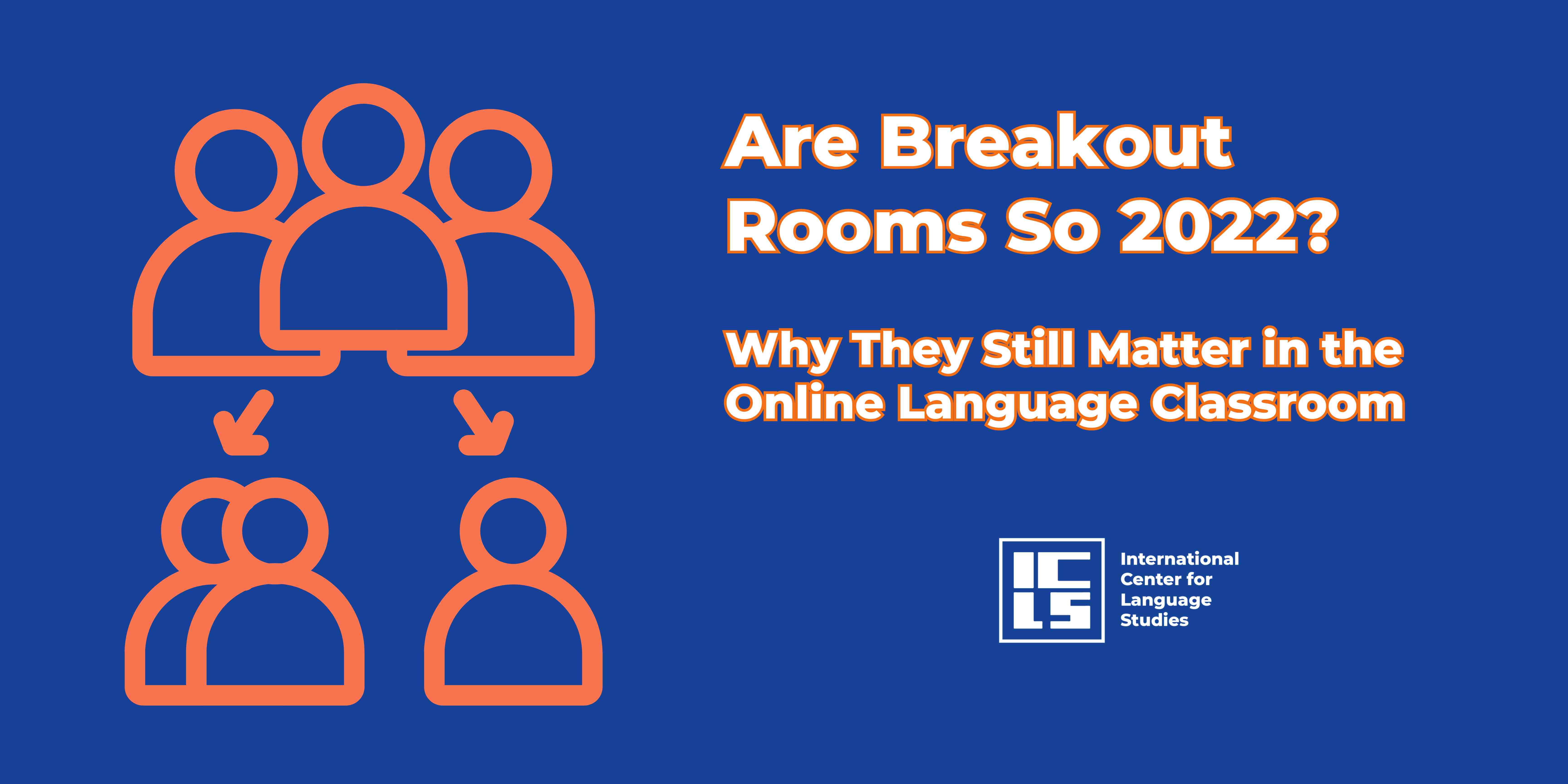Are Breakout Rooms So 2022? Why They Matter in the Language Classroom

When online teaching first went mainstream during the pandemic, breakout rooms became the go-to tool for group work. Some teachers loved them, others dreaded the silence when students disappeared into their rooms. Fast-forward to 2025, and you might be wondering: Are breakout rooms outdated?
The short answer: no. If you’re teaching languages online in Zoom or Teams, breakout rooms remain one of the best tools for pair work and small group practice. They may not be perfect, but they’re still essential for building interaction, increasing speaking time, and lowering the affective filter.
Why Breakout Rooms Still Matter
Language learning is not a spectator sport. Students need active, repeated opportunities to produce the target language in low-stakes environments. Breakout rooms make this possible by:
- Increasing student talking time compared to whole-class work.
- Encouraging peer-to-peer interaction and scaffolding.
- Lowering the affective filter by letting students practice in smaller, less intimidating groups.
- Creating space for collaborative tasks like role plays, problem-solving, and games.
The Breakout Room: Imperfect but Still the Best Option
Despite their benefits, breakout rooms are far from flawless. Technology can get in the way: dropped connections, muted mics, cameras off. And yes, there are newer tools—like spatial chat and other “virtual classroom” platforms—that offer a smoother, more immersive experience. But those platforms are often expensive and hard to scale, leaving most of us with Zoom and Teams.
We might have expected the pandemic to spark a wave of truly innovative solutions. But here we are, still clicking “Open all rooms.” And honestly? That’s okay—as long as we know how to use them well.
Common Teacher Frustrations
If you’ve ever opened breakout rooms and come back to a room full of blank stares, you’re not alone. Teachers often share frustrations such as:
- Students going silent or waiting for the teacher to appear.
- Overly passive learners preferring to interact with the teacher rather than peers.
- Unequal participation (one student dominates, others disappear).
- Technical issues slowing things down.
Recognizing these challenges is the first step to designing activities that keep everyone engaged.
Training Students to Use Breakout Rooms
Interestingly, not all students come into online learning with the same level of experience. Younger learners who didn’t go through online schooling during the pandemic may need explicit training on how breakout rooms work and what’s expected of them. But really, all students benefit from an orientation.
Some things to cover early on:
- How to join and leave a breakout room.
- How to use the chat (and that it’s private in the room).
- How to ask the teacher for help.
- Expectations for participation and respect.
Think of it as classroom management 101—but online.
How to Make Breakout Rooms Successful
Before we get to activities, here are four principles that make breakout rooms productive:
- Clear instructions – Give the task, the goal, and the time limit. Bonus: share it in writing (chat, slide, or doc).
- Purposeful tasks – Pair work should never feel like busywork. Link it to your learning objectives.
- Accountability – Plan a follow-up step so students know they’ll share something afterward.
- Monitoring – Visit rooms to encourage, clarify, and check engagement.
15 Engaging Breakout Room Activities for the Language Classroom
Now that we’ve covered the why and the how, here’s the fun part: 15 ready-to-use activities to make your breakout rooms come alive. These activities will help your students practice speaking, listening, and collaborating — without the dreaded silence. Click here to request your copy.
Conclusion
Breakout rooms may not be shiny or new anymore, but they’re still one of the most powerful tools we have for online language teaching. With the right preparation, clear expectations, and engaging tasks, they can transform a passive online class into an interactive, communicative experience.
So the next time you’re tempted to skip them, remember: breakout rooms aren’t “so 2022.” They’re exactly what your students need in 2025, until something better comes along.


